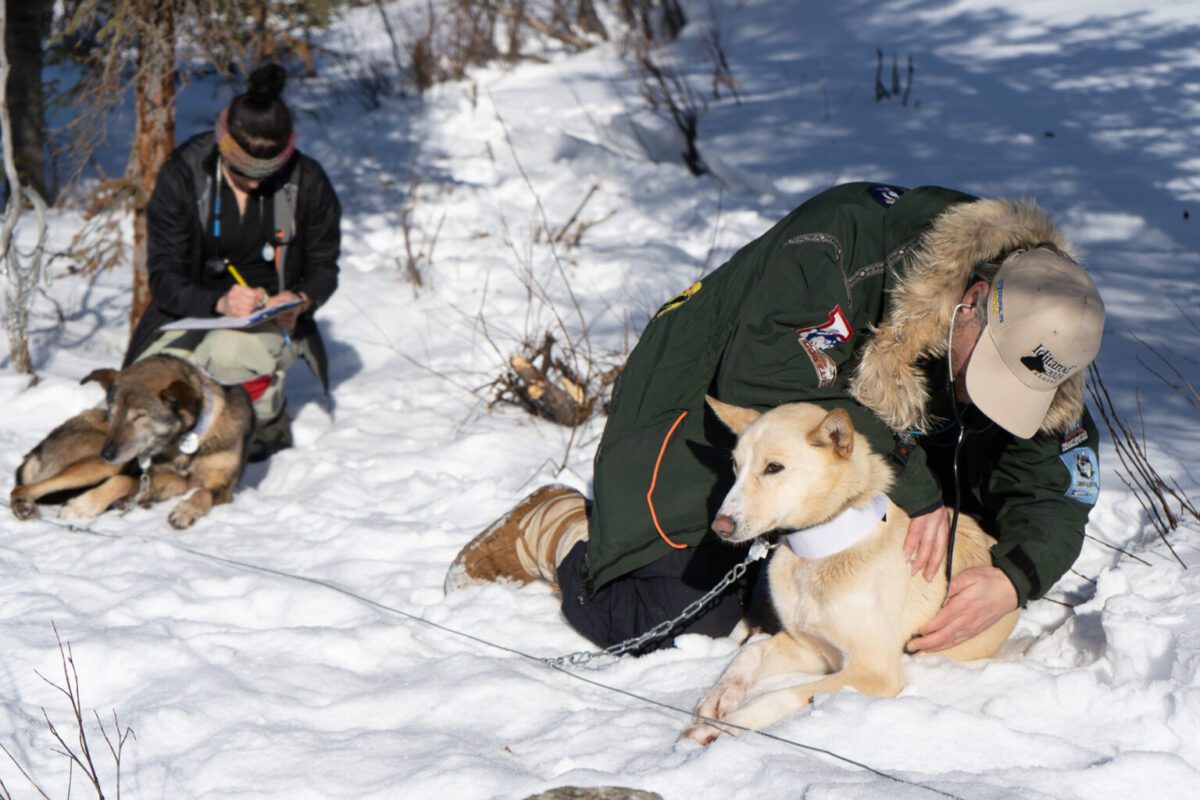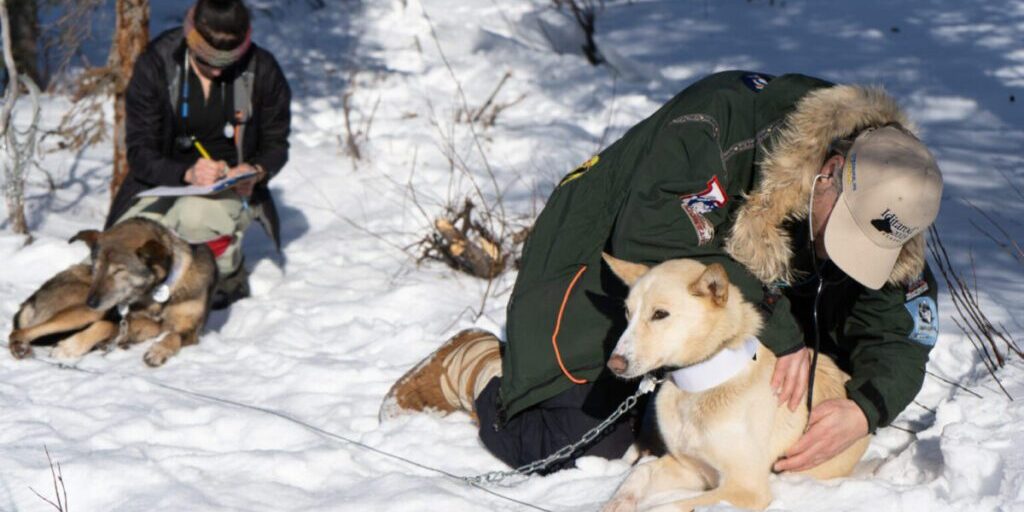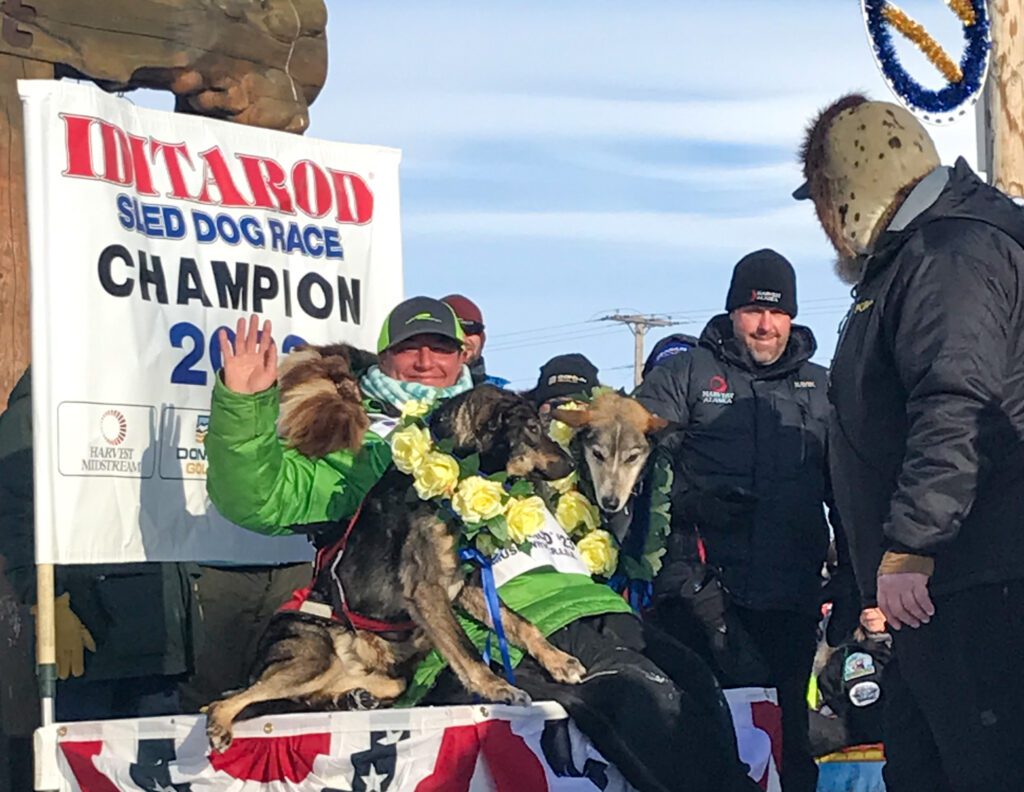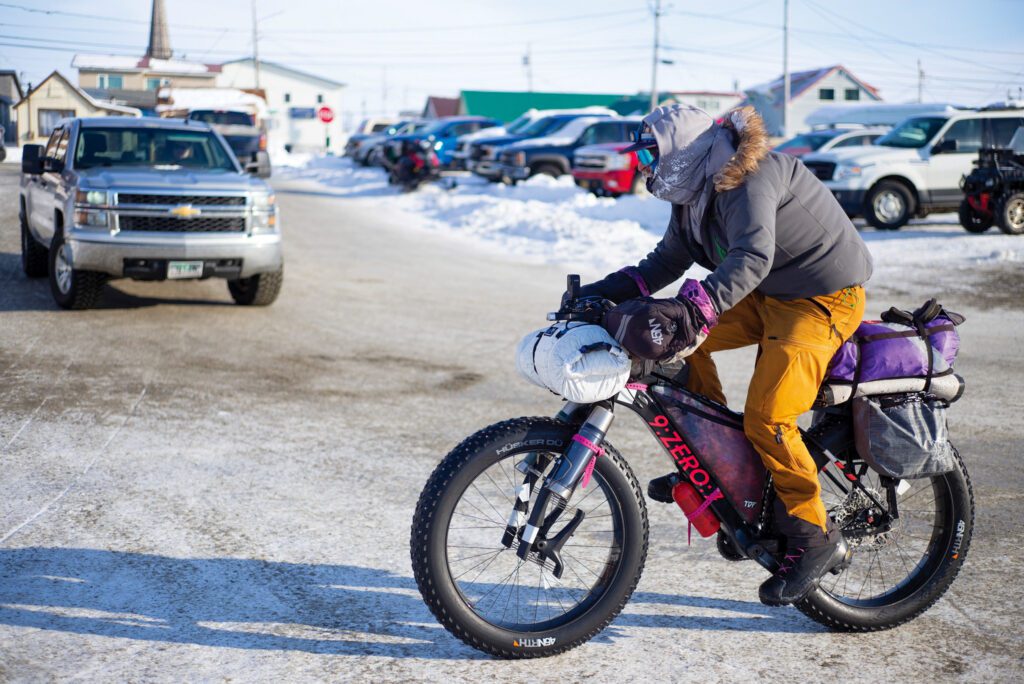This article by Lex Treinen was originally published by Alaska Public Media. It was republished with permission through a partnership with KNOM.
Iditarod officials are hopeful a new policy of affixing tracking collars to all dogs returned by mushers at checkpoints can avoid a repeat of an incident last year, in which a dog spent three months in the wild after escaping Iditarod care.
Last year, Sebastian Dos Santos Borges’s dog Leon escaped from the checkpoint in Ruby, about halfway into the race. The musher had sent Leon home at the checkpoint, and the dog slipped from his coat and collar. He went missing for three months before he was recaptured more than 100 miles away in McGrath.
Each year during the Iditarod Trail Sled Dog race, dozens of dogs are left behind at checkpoints with illness or injuries, usually minor. Those dogs are checked by veterinarians and then flown to Anchorage or Nome, where they’re held until their mushers arrive.
Now, the dogs will wear tracking collars. Diersko Von Pfeil, a veterinarian with the Iditarod, said the program is in a preliminary phase right now.
“Basically every dropped dog gets this tracker on and then they’re being tracked by people in Anchorage so that we can make sure where these dogs are,” he said.

After a musher drops the dog, vets Velcro a collar with a pocket for the tracking device to fit into.
“It’s really nice because just like in the human rescue situations you have these SPOT trackers, like the mushers can push the button, you have that on your sled and then you exactly localize where the person is or, in this case, they’re sending out signals now all the time since we have them on the dogs and then we know where they are and can track them,” he said.
Von Pfeil said this year, there are a few dozen trackers being tested and the goal for the future is to put the trackers on all returned dogs.

Image at top: Diersko Von Pfeil holds a GPS tracking device attached to a dog collar. (Lex Treinen/Alaska Public Media)







